i recently downloaded a training app to workout and I now realsize I've been doing almost every exercise wrong :/ Thanks for the info! I really needed it :)
8 Popular Exercises That Even Fitness Instructors Do Wrong
Fitness experts are sure that you can get in good shape without going to the gym. And the exercises that can be performed at home like plank, twists, and squats, are perfect for this. But they may only look simple at first glance — in fact, many people do them wrong. And this can not only affect their effectiveness, but it can also cause health problems.
We at Bright Side learned about some common mistakes people make while performing basic exercises. So we studied the advice of fitness specialists and now we know how to fix them.
1. Plank
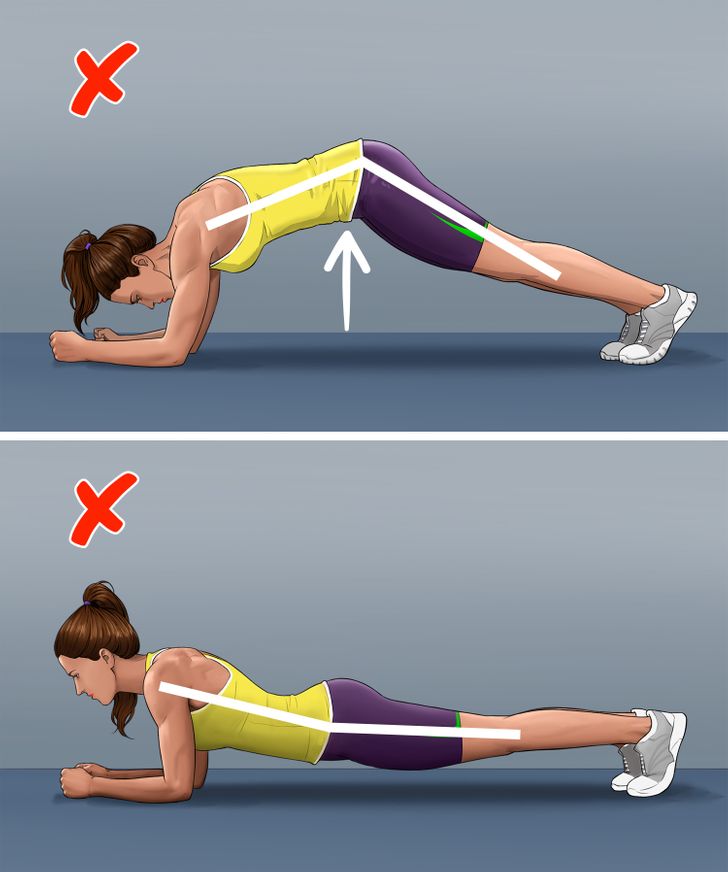
The plank is one of the most effective basic exercises that engage all body parts. But the improper performance of this exercise resets all its effectiveness and may lead to problems with the spine.
Mistakes
-
The raising of the pelvis leads to improper distribution of the load, which puts too much pressure on the shoulders, causing pain in the neck.
-
Deflection in the lower back reduces the engagement of the ab muscles, harms the knees, and may cause pain in the lumbar area.
-
Improper head position: Looking up or to the side may lead to cervical osteochondrosis.
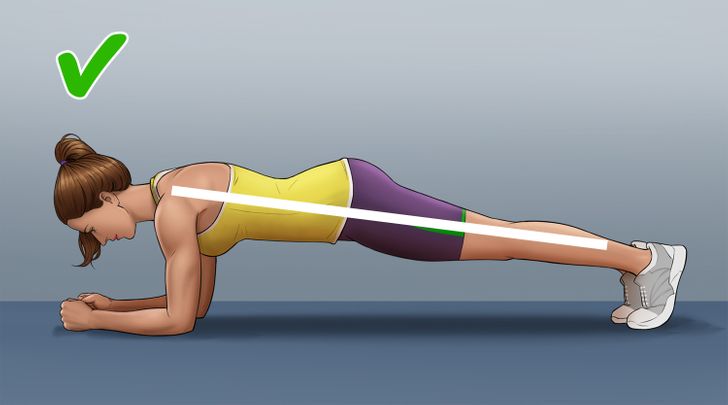
The right technique
- Place your elbows right under your shoulder joints, relax your neck, and look down.
- Your legs must be straight, and your gluteal muscles should be engaged.
- Your back should be straight, your stomach should be tightened, and your hips should form a straight line with your shoulders and heels.
2. Dips
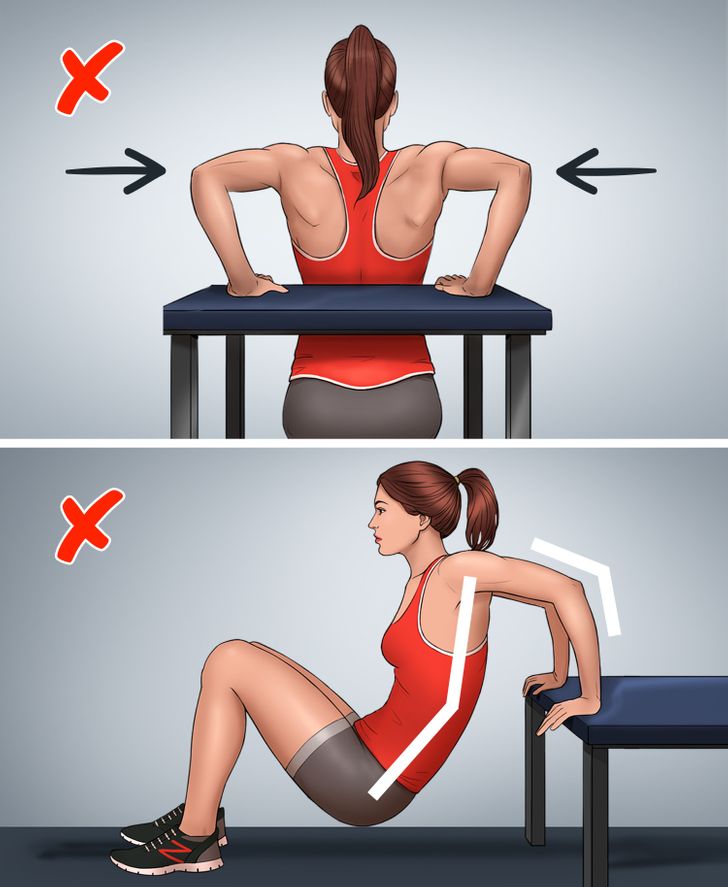
This is a basic exercise that works the triceps and the upper part of the body that is suitable for beginners because of the simplicity of how to perform it. As a rule, tricep dips should be performed with the help of a bench or a chair, but after a certain level of training, you can also do dips from the floor.
- If you extend your elbows to the sides, the shoulder joints will be loaded instead of the triceps.
- Rounding your back also overloads the shoulders and may lead to injury.
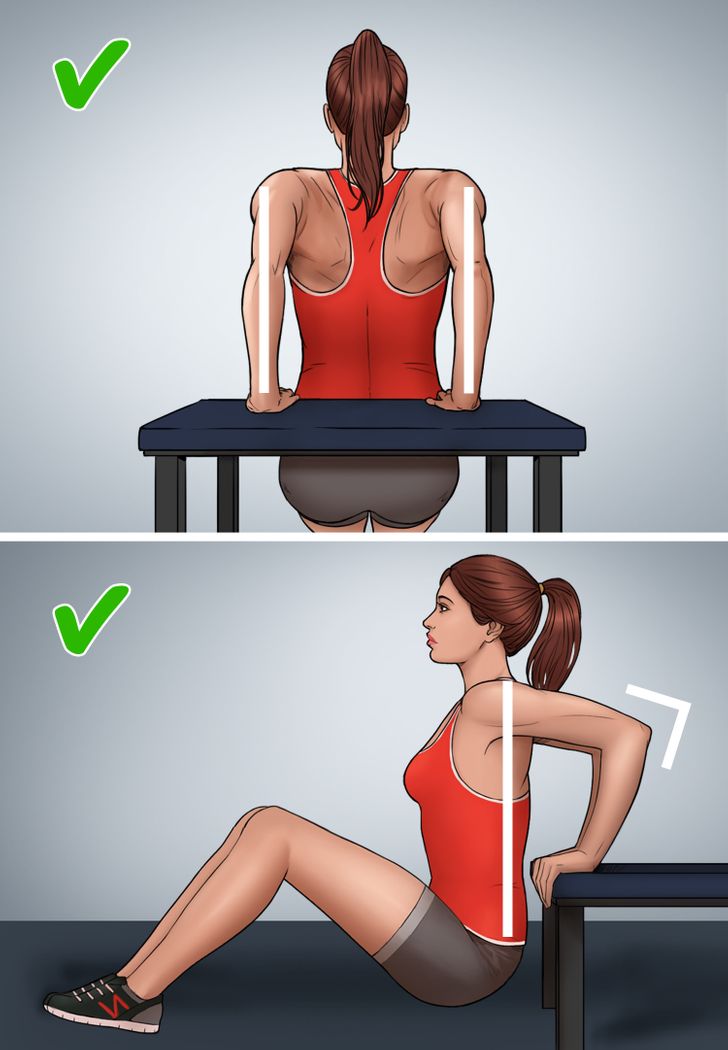
The right technique
-
Put your palms shoulder-width apart on the edge of a stable chair, stabilize your hips, and stretch your legs forward, resting your heels on the floor.
-
Slowly lower your body using the strength of your hands. At the final point, your elbows should form a 90° angle. Then push the bench away with your arms and return to the starting position.
-
Your back should be straight, and it should be located as close to the chair as possible. Your elbows should be bent back and not to the sides.
3. Crunches
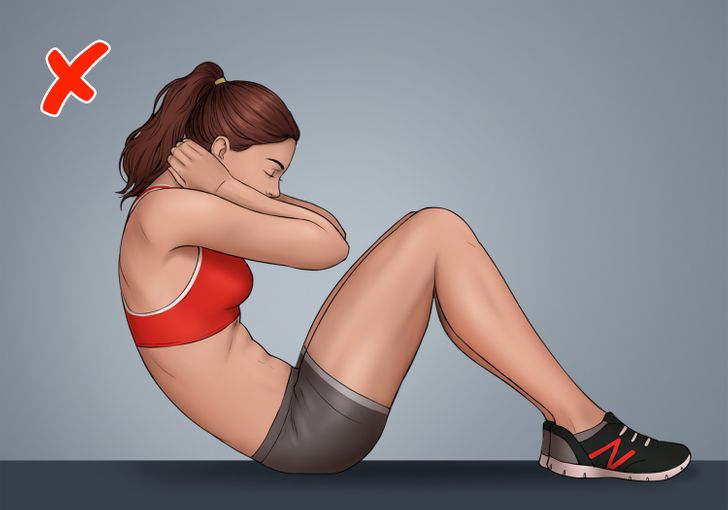
To perform a crunch correctly, you should lie on the floor and bend your knees at a 90° angle. And then, while engaging your ab muscles, you should smoothly raise your shoulders off the floor. It might seem like there’s nothing more simple than this exercise, but many people still make some mistakes.
-
A wide range of motion. If you lift the body too high, the main load will be on your hip muscles, and not on your ab muscles.
-
Bent neck. In this case, part of the load gets transferred to the neck or hands, if you keep them behind your head and apply pressure to the back of the head.
-
Securing the legs reduces the load on the ab muscles because it engages the hip muscles.
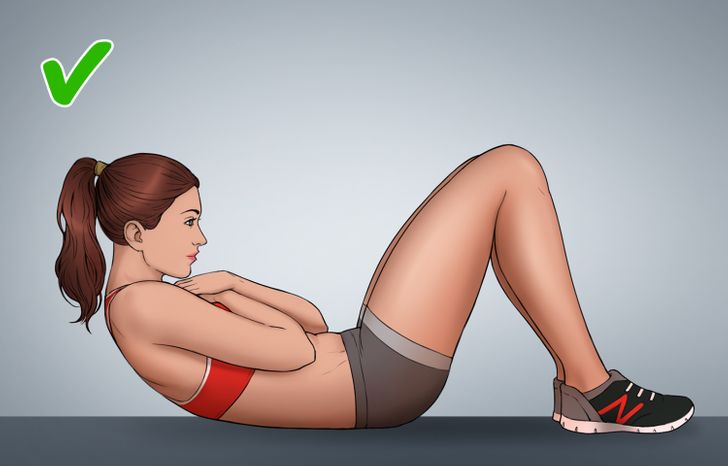
The right technique
-
Bend your knees at a 90° angle and press your lower back to the floor. Your hands may be crossed across the chest or placed behind the head.
-
Engage your ab muscles, smoothly raise your shoulders 6-9 inches off the floor, and then slowly lie back down on the floor without relaxing your muscles.
-
Keep your feet on the floor during the exercise and look straight in front of you.
4. Push-ups (a lighter version)
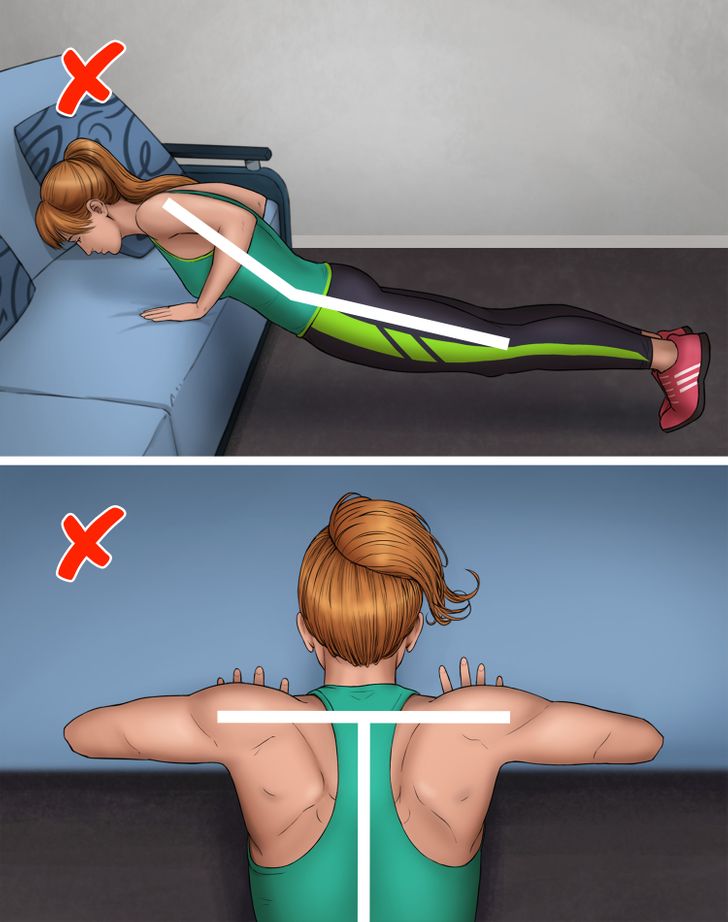
Studies show that a lighter version of push-ups engages the same targeted muscles, but without an excessive load. It could be push-ups from the knees or the toes, but you can also do them from the wall, a bench, or a sofa.
-
Deflection in the lower back will overload the spine.
-
The elbows are placed to the sides and resemble the letter “T” if you look at them from the top. In this position, the shoulders overwork, and the triceps and chest work less.
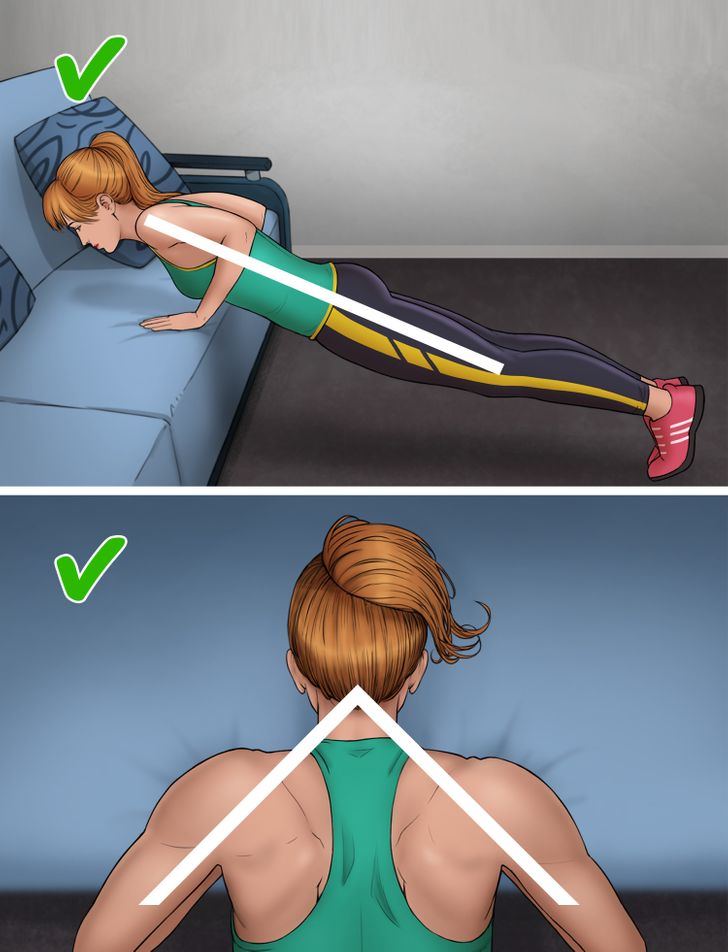
The right technique
-
Put your hands on the floor, the sofa, or a wall. Keep your body straight, like a string, and lower it as low as possible. Then rise smoothly.
-
Your arms should be placed slightly wider than shoulder-width apart. Your fingers should point forward.
-
It’s perfect when your elbows are placed at a 45° angle toward your body.
5. Squats
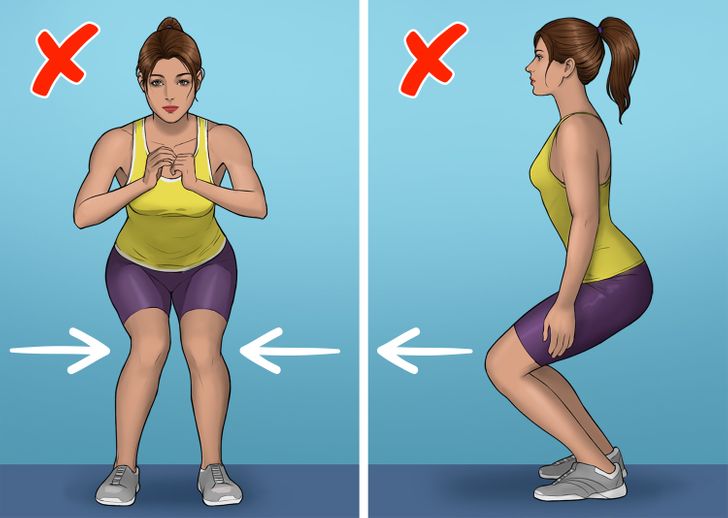
Everyone knows that you shouldn’t take your heels off the floor or hunch your back during squats, but there are less obvious mistakes.
-
You don’t bend your knees in the direction of your toes, which increases the load on your joints and involves the abducting muscles of the thighs less.
-
Your knees fall forward, beyond your toes. This reduces the load on your buttocks and can lead to pain.
-
Some people raise their heads during squats. You don’t need to do this: it ruins the balance and technique, and can also cause lower back and neck pain.
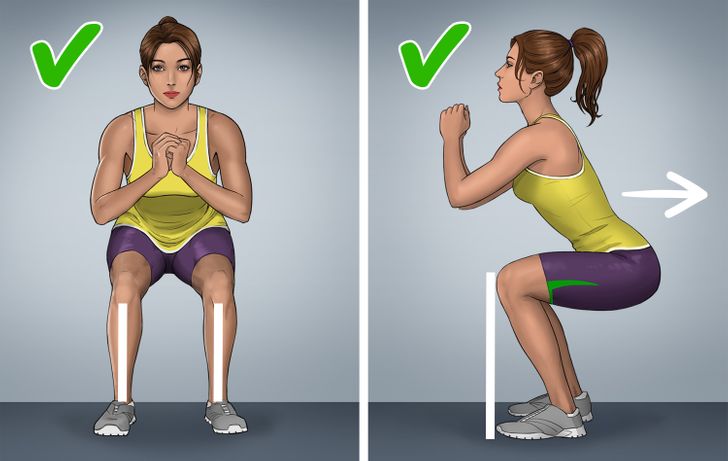
The right technique
- The back should be straight, you should look in front of you, and your feet should be flat on the floor throughout the exercise.
- Your knees shouldn’t go beyond your toes. To improve your technique, think about lowering your buttocks rather than bending your legs.
- The patella should face the same direction as the toes.
- The squat should be performed smoothly, without jerking.
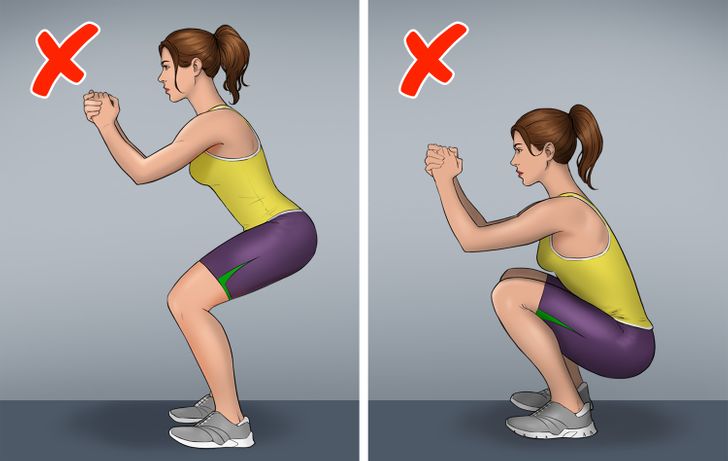
A lot depends on the depth of the squat and the width of the legs’ position.
-
It’s correct to squat until the hips are parallel to the floor. With incomplete squats, the thigh muscles are poorly engaged, and with squats that are too deep, the knees get overloaded.
-
The wider apart you place your legs, the more you load the muscles of the inner thighs and the buttocks.
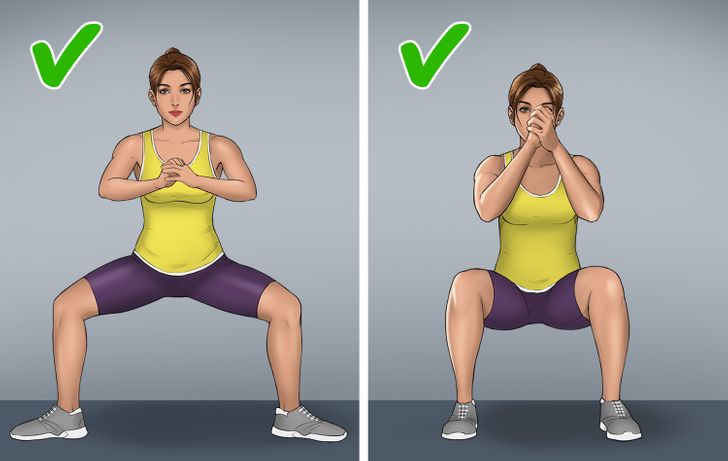
6. Lunges
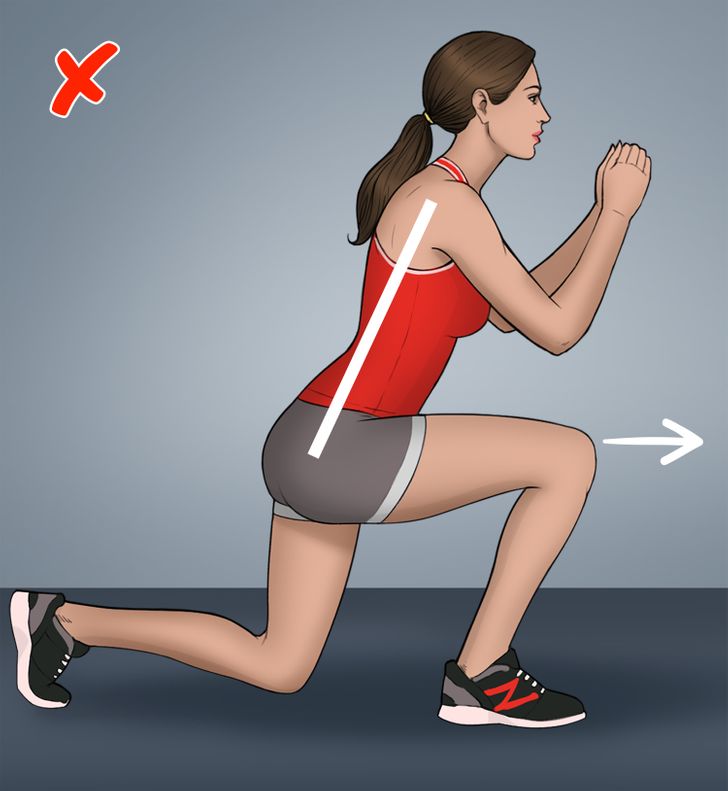
If you perform them right, lunges work glutes and quad muscles in the same way as squats and deadlifts.
Mistakes
- The knee of the front leg goes beyond the toe line. This leads to the uneven distribution of the load and the engagement of the front part of the thigh, preventing the buttocks from working.
- The body falls forward, which unnecessarily loads the knee of the supporting leg and ruins your balance.
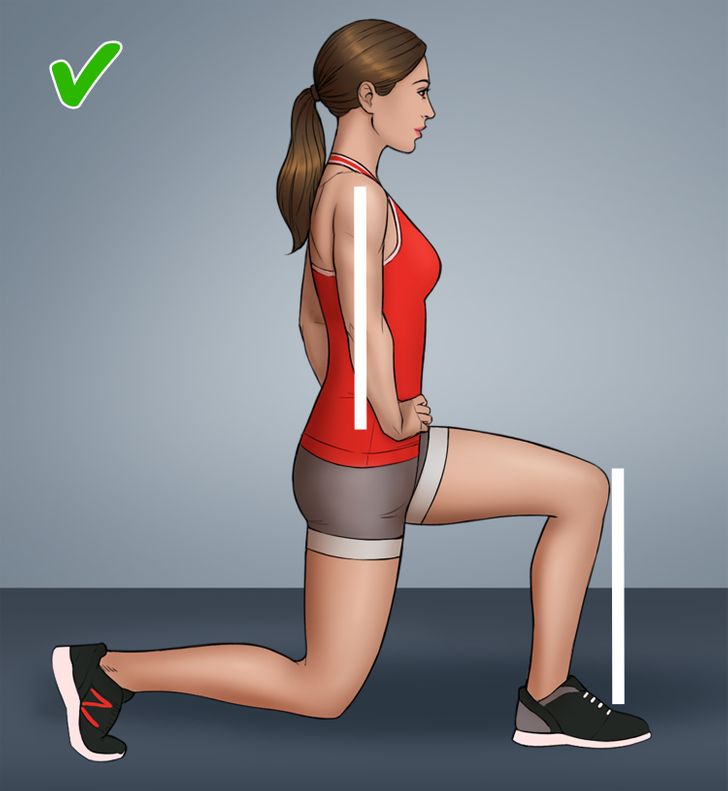
The right technique
- Take a big step forward, transferring your body weight to the front leg. Keep your body straight.
- Lower down until the thigh of the supporting leg is parallel to the floor. Both legs should form a 90° angle between the thigh and the lower leg.
- It is important that the knee doesn’t go beyond the toes.
- Return to the starting position by pushing yourself up with the heel of the supporting leg.
7. Side lunges
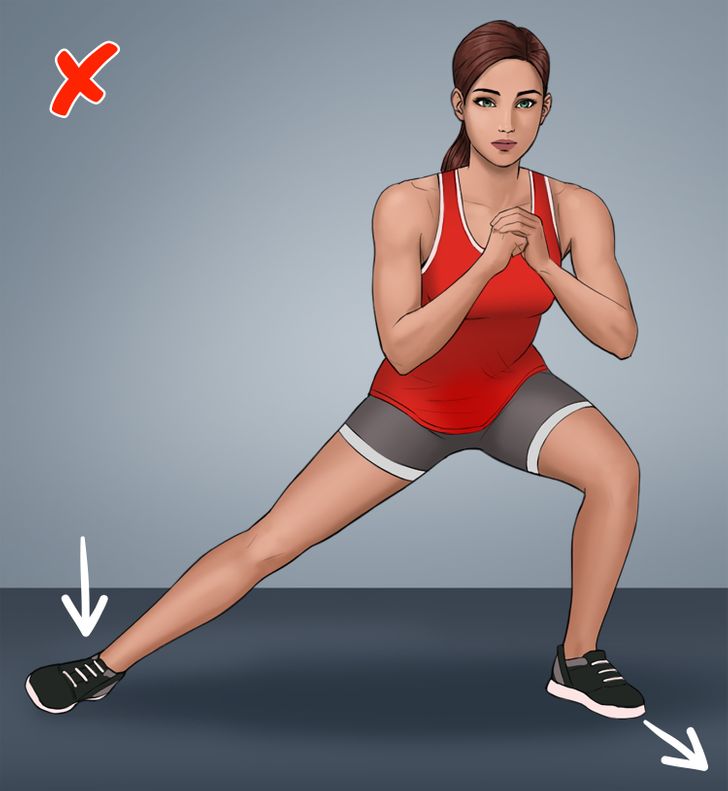
This exercise perfectly engages the inner thigh muscles. It is very simple, but the improper execution can adversely affect the spine and knees, as well as reduce its effectiveness.
Mistakes
-
The foot of the extended leg doesn’t completely touch the floor, and the toes of the other leg are directed outward.
-
The knee of the supporting leg is shifted to the side.
-
The back leans forward.
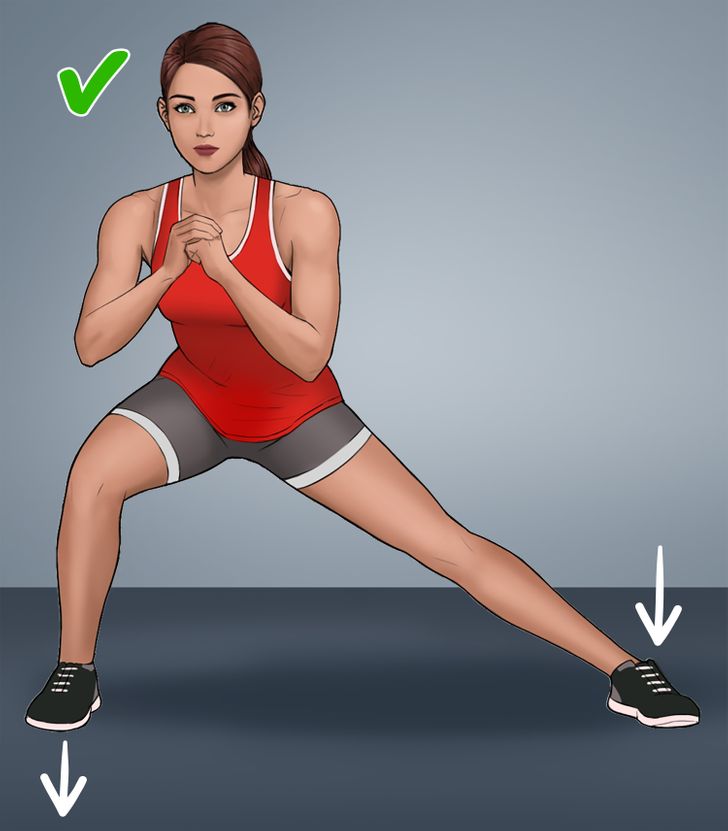
The right technique
- Take a step to the side and pull the pelvis back, so that the thigh of the supporting leg is almost parallel to the floor.
-
Both feet are flat on the floor and the toes are facing forward. The back is straight.
-
The knee of the supporting leg is above the foot, and the lower leg is perpendicular to the floor.
8. The boat exercise
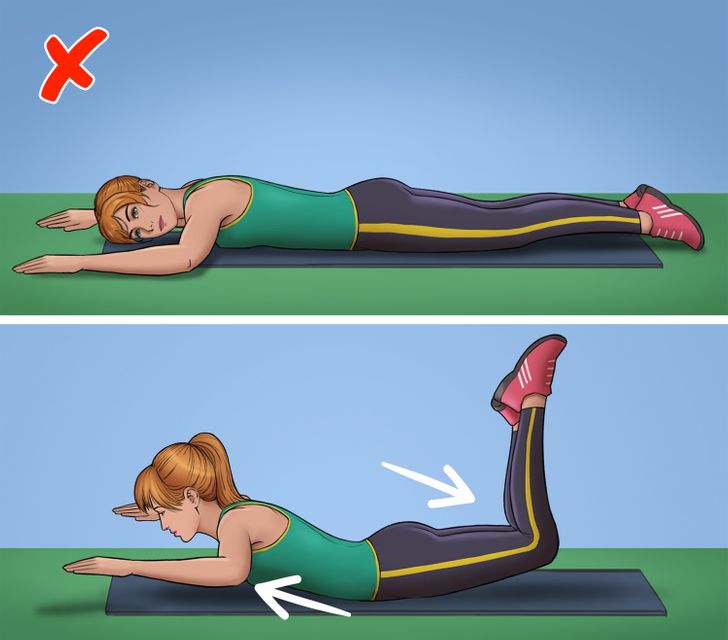
The regular performance of the boat exercise is a perfect way to strengthen the lumbar region, improve blood circulation to the pelvic organs, and relieve back pain.
Mistakes
- The knees are pressed to the floor in the initial position, so the muscles of the legs are engaged instead of the back muscles.
- The limbs are bent during the exercise, which lessens the load on the back muscles.
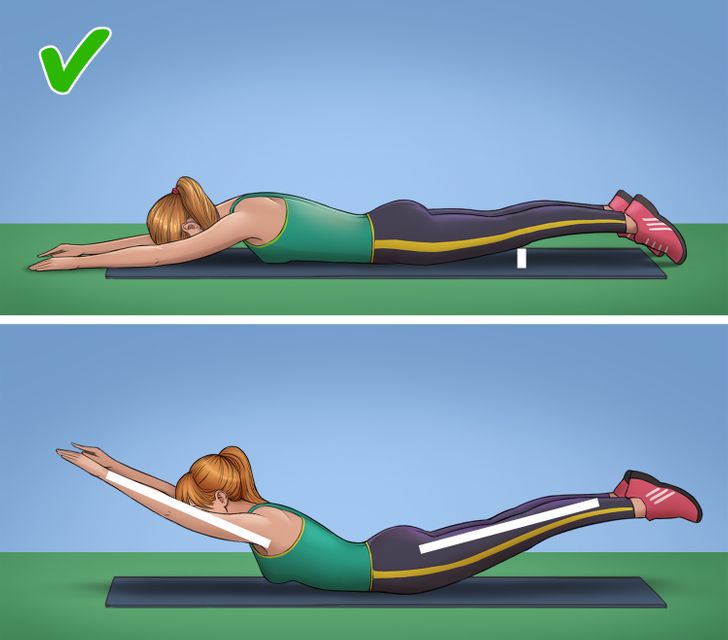
The right technique
- Starting position: Lie face down with arms and legs extended as much as possible. Tighten your hips so that your knees don’t touch the floor.
-
Lift your arms, chest, and legs from the floor. Slowly raise them up and hold for 2-4 seconds. Then return to the starting position.
How often do you exercise at home? And which exercises do you include in your workout?
Comments
realize
As a personal trainer I'm telling you. Having the right posture and doing the exercise RIGHT is all that matters.
Exactly. I am a yoga teacher and I always say to my students, modify if you cannot reach the "top"of the pose. But never maintain a wrong posture ;)
haha my yoga instructor says the exact same thing. But I always want to go "harder"and she repeats "Ursa... beginner's mode"ahaahha
Hahah that's about right! Cause its really easy to get an injury :/
Thanks brightside, I will show this to my girlfriend and maybe now she will trust me ?
do you train together often? i wish my boyfriend would do the same with me
Yeah we used to train together during the lock-down! It was nice but now we moved on to different schedules
thats why me and my bf dont train together, he mainly does power lifting and stuff.. nothing for me!
nice
I found some mistakes in my planking,push-ups and tricep-dip.
I exercise 2 times every day and my workout include plank,push-up,jumpin g-jack,cobra-stretch , running in a place,triceps-dip and etc.I love exercises,how about you,guys?
Related Reads
7 Super Effective Yoga Poses for Beautiful Breasts
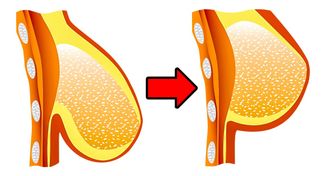
How 15 Celebrity Couples Looked When They First Debuted vs Today

22 Images That Deceive Your Eyes

15 Life Situations That Used to Be Normal and Now Look Wild

12 Movie Scenes Actors Would Like to Forget Like a Bad Dream

17 Honest Pictures From an Artist That Treats the Hard Parts of Motherhood With Humor
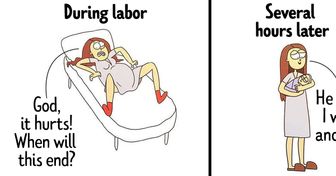
14 Little Details That Make Even the Most Stylish Image Look Tasteless

16 Times People Made Their Creativity Supreme
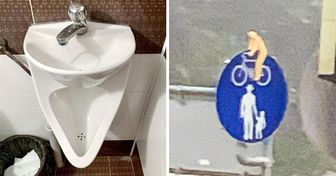
“Screams Desperation,” Nicole Kidman, 56, Stuns in a Risqué Dress, But People Say It’s Not Age-Appropriate

10 Answers to Questions You Were Feeling Too Lazy to Google

Zac Efron’s Appearance a Few Days Ago Leaves Fans Shocked and Worried

17 Witty Kids Who Outsmarted Everyone and Beat the System
